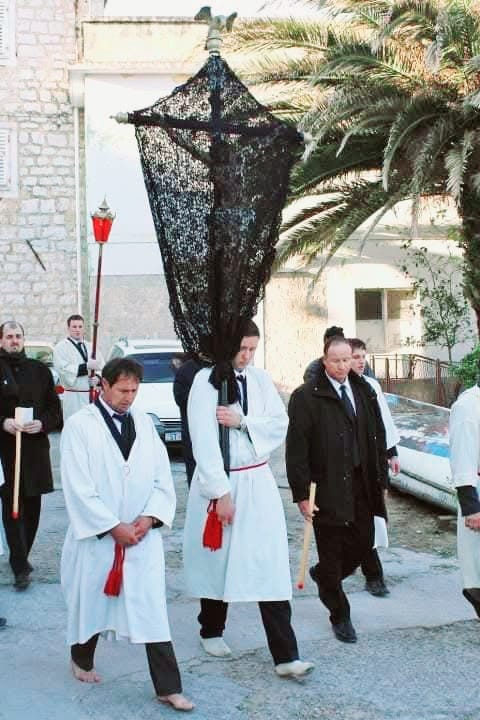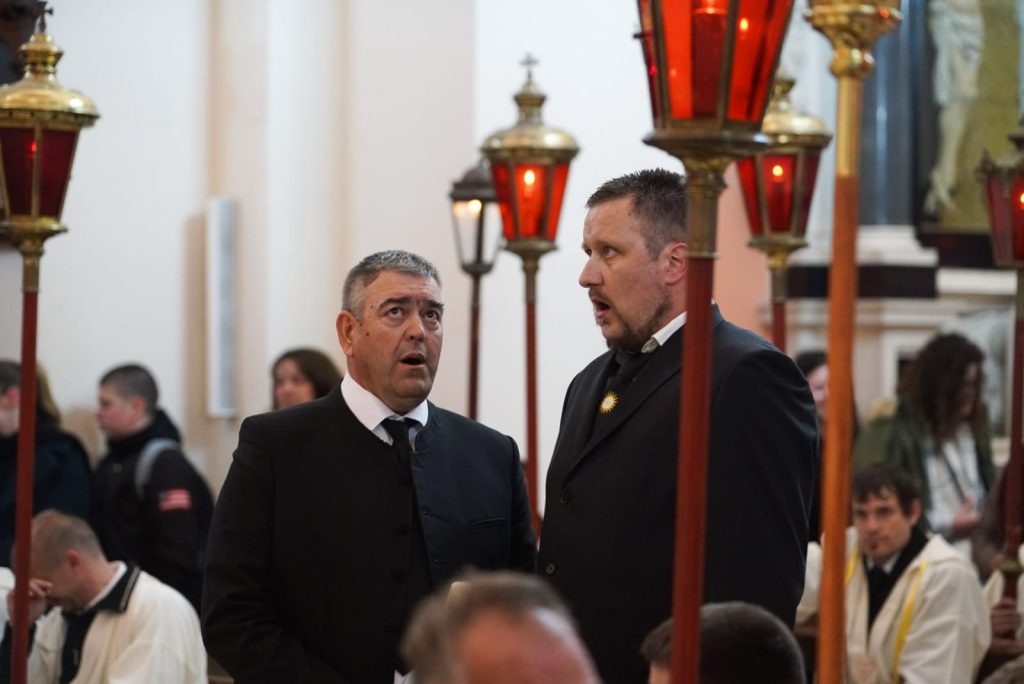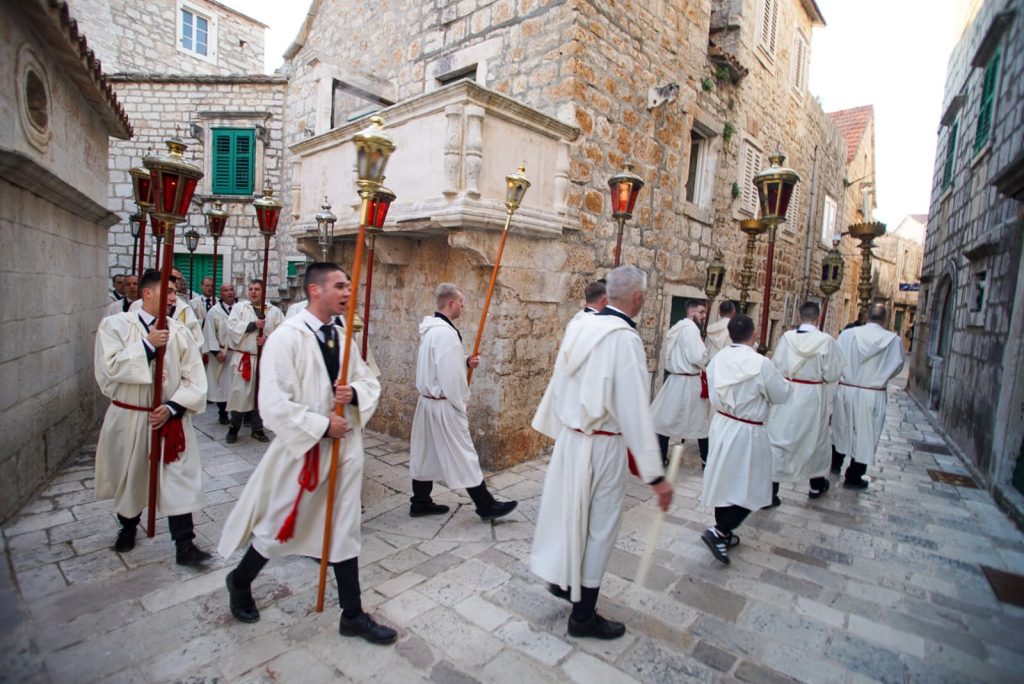Dario Belić in conversation with Pavel Gulin Zrnić
Some thoughts from Dario Belić, who was -unusually – Cross-Bearer for Jelsa twice, in 2006 and 2021.

Q: How important is the ‘Following the Cross’ Procession in the community life here?
A: Here, as the old people put it, we live for the Cross and die with it. You are engaged in the whole programme from the moment the previous year’s Cross-Bearer passes the Cross to the next Cross-Bearer, whose service lasts the whole year until the next handover.
Q: You yourself have carried the Jelsan Cross?
A: Yes, twice, in 2006 and 2021, four years ago. In fact, 2006 was not my year, but through force of circumstances I carried the Cross instead of one of my cousins. I’ve been in the Confraternity for about thirty years. I enrolled in the mid-1990s and reistered to carry the Cross in 2021.
Q: What does membership of the Confraternity mean?
A: Well, in order to be a Cross-Bearer, first one has to be a member of the Confraternity of the Most Holy Sacrament of the Altar, and then one can apply. Every year the Confraternity holds a meeting in which new members are enrolled both for membership as Brothers and in order to be Cross-Bearers.
Q: What are the Cross-Bearer’s duties during his year of carrying the Cross?
A. Once a month through the whole year, in the third week of the month, there is a Mass followed by a procession. The chant ‘Sing, my mouth’ is sung. The procession starts inside the church, or sometimes in the courtyard known as the ‘Šematorij’.
Q: What role do young people have in ensuring that the ‘Following the Cross’ Procession tradition continues?
A: I don’t think there is any problem, as the applicants’ list for carrying the Cross is full until 2060. This was not the case looking back about thirty years, as there was a real crisis from the 1960s to the 1980s, when the Cross was carried collectively by groups of Confraternity members or newly confirmed youngsters. But at the end of the 1980s and the beginning of the 1990s everything simply got going

Q: So in the course of the Procession’s history there were some difficult times?
A. 1943 was a very trying year for the ‘Following the Cross’ Procession, perhaps especially in Jelsa. The Italians were in occupation and there was a strict curfew. So there were great problems. There was also a crisis in the records, everything was written down in quotation and question marks: what was going to happen next year, will the Procession happen? Yet somehow it carried on.
Over the last hundred or a hundred and fifty years some authorities which were passing through sometimes tried to find ways somehow to put a stop to the Procession, but even then they could not stamp it out. Let’s say how in 1944, when the Procession was banned, it was held in El Shatt in Egypt, where our refugees created the Stations of the Cross, their Crosses and everything needed for the Way of the Cross.
Q: We hope that those times of crisis are now behind us. Will you be having some role in this year’s ‘Following the Cross’ Procession?
A: Yes, this year I will be singing ‘Our Lady’s Lament (Gospin plač) with my colleague Vladimir Garić for my friend who is carrying the Cross. Vladimir, who is also from Jelsa, sings in the ‘Four Tenors’ group. This year is the first time he is singing the people’s choral passion whose roots arise from Medieval harmonies.
He is the same age as me, we were in the same class at school. I have been singing all my life. I believe these Laments of Our Lady came into being from one version, but have been adapted by the singers in each of the settlements which take part in the Procession. So the melody of Our Lady’s Lament is like the bone structure, the same in all the parishes, but with variations which make for great richness when you hear them.
Not all the melodies are the same, but you can see that they come from the same base. It is interesting that these melodies have been passed from generation to generation only by ear, but with the singer always adding his own touch. It means that in essence the melody always stayed the same, fundamentally the same. But the singer, I think, always added some personal note.


